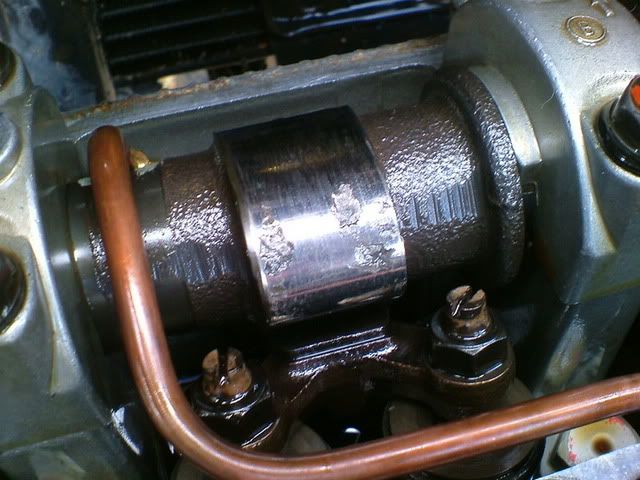Warchild
Benevolent Dictator
Well, not sure what to make of this, and obviously one data point doesn't mean diddly-squat anyway, still..... we have a lot of smart engine guys here, so perhaps some of you mechanically-inclined types can lend some insight/share your experiences.
You are looking at the pitted cam lobes of a 2008 Hayabusa (not mine!) with approximately 100,000 miles on it:

What is known thus far:
Again, one data point really doesn't mean anything. I haven't seen a lot of Hayabusa forum threads regarding pitted cams, so I am not thinking this is a huge issue here by any means. I have heard of Suzuki pitted cams before... as well as Kawasaki, Honda, etc.
It's just a little disturbing to see them on an engine just like mine...
I am approaching 70,000 miles on my K8, and I am not far off from having to check valve clearances again. You can best believe I will be paying close attention to cam lobes the next time I have a chance to inspect them.
You are looking at the pitted cam lobes of a 2008 Hayabusa (not mine!) with approximately 100,000 miles on it:

What is known thus far:
- Bike has (obviously) been ridden a lot - but never abused, drag-raced, etc. Just street riding, though a fair amount of it.
- Bike has spent a fair amount of time in mountain twisties, engine speeds tend to stay in the upper RPM range (though south of redline).
- Before 40K miles, oil was religiously changed every 3000 miles. After 40K miles - it was more like a 3-4K oil change interval.
- Unlike Suzuki factory recommendation, the oil filter was changed with every oil change. Always.
- Oil brand: plain 'oil everyday (factory recommended) Suzuki 4-Cycle Performance Motorcycle Engine Oil, 10w40
Again, one data point really doesn't mean anything. I haven't seen a lot of Hayabusa forum threads regarding pitted cams, so I am not thinking this is a huge issue here by any means. I have heard of Suzuki pitted cams before... as well as Kawasaki, Honda, etc.
It's just a little disturbing to see them on an engine just like mine...
I am approaching 70,000 miles on my K8, and I am not far off from having to check valve clearances again. You can best believe I will be paying close attention to cam lobes the next time I have a chance to inspect them.


































































